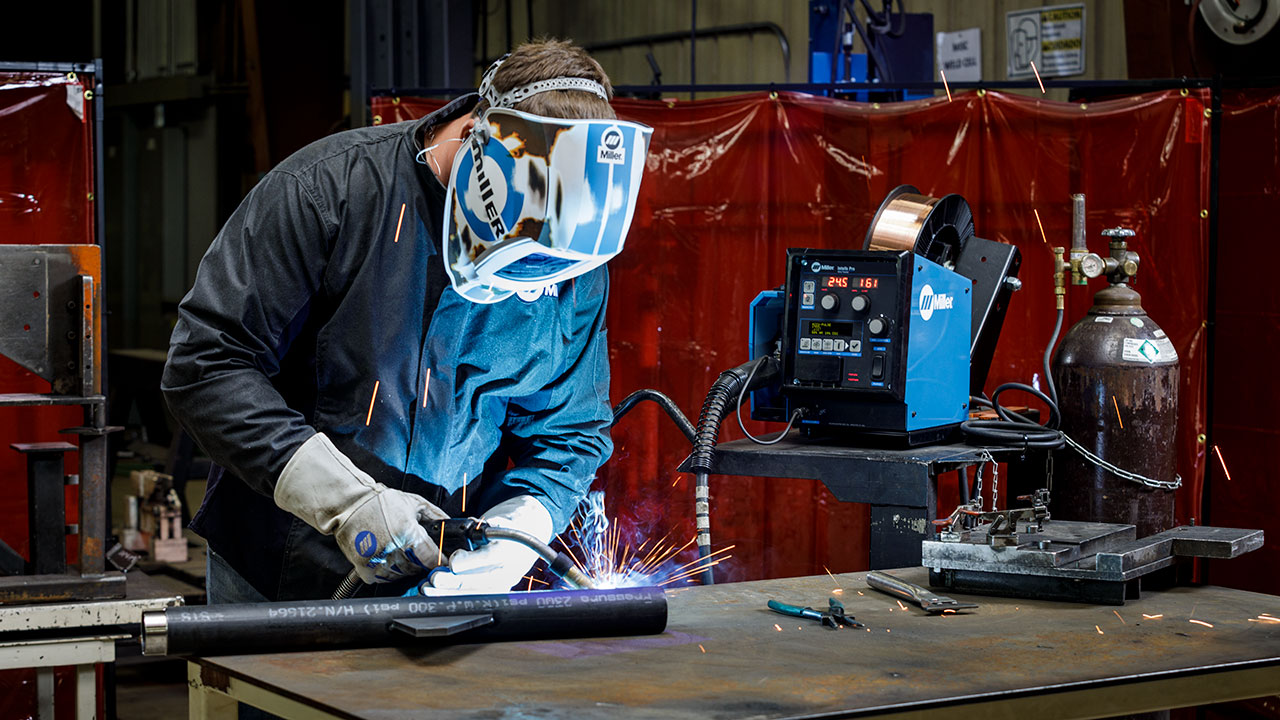The Ultimate Overview to Welding WPS Procedures: A Comprehensive Review for Welders
In the intricate world of welding, Welding Treatment Requirements (WPS) offer as the backbone of guaranteeing top quality, consistency, and security in welding operations (welding WPS). As we dive into the various components of a WPS and discover the details of credentials and accreditation, we will reveal the essential duty these procedures play in the world of welding.
Value of WPS Procedures
Comprehending the importance of Welding Procedure Requirements (WPS) procedures is essential for ensuring the top quality and integrity of bonded frameworks. WPS procedures function as a roadmap for welders, detailing the required actions, specifications, and materials called for to achieve an audio weld. By sticking to WPS standards, welders can guarantee consistency in their job, causing trustworthy and structurally audio welds.
One of the key reasons WPS treatments are necessary is their function in keeping weld high quality and integrity. Complying with the specified welding specifications and techniques detailed in the WPS helps protect against issues such as porosity, breaking, or insufficient fusion, which can compromise the stamina and toughness of the weld. In addition, WPS procedures are crucial for making sure conformity with industry requirements and codes. By following well established WPS guidelines, welders can show that their job meets the necessary demands for safety and security and quality, giving guarantee to customers, inspectors, and regulative bodies. Basically, the significance of WPS treatments can not be overemphasized, as they are essential to achieving constant, high-grade welds that meet market standards and specs.

Components of a WPS
A Welding Procedure Requirements (WPS) normally makes up important parts that information the specific needs for carrying out a weld, guaranteeing uniformity and high quality in the welding process. The crucial components of a WPS consist of necessary variables such as base metals, filler steels, preheat and interpass temperature levels, welding processes, securing gases, welding settings, and post-weld heat therapy requirements.
Base steels refer to the products being joined, while filler steels are used to fill the gap in between the base metals throughout welding. Preheat and interpass temperatures are critical for regulating the heat input and preventing problems like cracking or distortion. The welding procedure describes the details technique to be made use of, whether it's gas metal arc welding (GMAW), protected steel arc welding (SMAW), or another method. Securing gases shield the weld swimming pool from atmospheric contamination. Welding placements define the alignments in which welding can be executed. Post-weld heat therapy may be needed to alleviate stress and anxieties and enhance the weld's properties. A complete understanding of these components is important for developing a extensive and efficient WPS.

Qualification and Certification
Having established the vital elements of a Welding Treatment Spec (WPS), the emphasis currently moves towards the vital elements of qualification and certification in welding practices.
Qualification, on the other hand, is the official acknowledgment of a welder's qualifications by an appropriate qualification body or company. Welding qualifications are generally based upon the details welding procedures, products, and placements a welder is certified to deal with. Holding a legitimate welding accreditation shows that a welder meets market criteria and is competent to do welding jobs to the called for specifications.
Creating a WPS
To develop a Welding Procedure Requirements (WPS) that fulfills market requirements, cautious consideration of welding processes, products, and functional specifications is essential. The very first step in creating a WPS is to recognize the welding procedure to be utilized, such as gas metal arc welding (GMAW) or protected metal arc welding (SMAW)

Implementing and Monitoring WPS
Upon wrapping up the extensive Welding Treatment Spec (WPS) that meticulously information welding processes, products, operational specifications, and high quality guarantee steps, the emphasis shifts to properly executing and monitoring the well-known treatments. Application entails guaranteeing that all welders entailed in the project are familiar with the WPS and follow it This Site carefully throughout the welding procedure. Effective execution and monitoring of the WPS are important for making certain the stability, stamina, and safety and security of the welded joints, eventually adding to the overall success of the welding project.
Conclusion
To conclude, understanding and following Welding Treatment Specifications (WPS) is vital for welders to ensure high quality, uniformity, and safety and security in their work. By knowing the elements of a WPS, getting correct qualifications and qualifications, creating thorough treatments, and implementing and monitoring them effectively, welders can improve their abilities and effectiveness in welding practices. Sticking to WPS procedures is necessary for generating top quality welds and conference sector criteria.
In the complex world of welding, Welding Treatment Specs (WPS) offer as the foundation of making sure top quality, uniformity, and security in welding operations. The welding process details the certain method to be utilized, whether it's over here gas steel arc welding (GMAW), shielded steel arc welding (SMAW), or an additional approach.To create a visit their website Welding Treatment Spec (WPS) that satisfies market requirements, careful consideration of welding processes, materials, and operational parameters is essential. The initial action in developing a WPS is to determine the welding process to be utilized, such as gas metal arc welding (GMAW) or secured steel arc welding (SMAW)Upon settling the detailed Welding Procedure Specification (WPS) that meticulously details welding processes, products, functional parameters, and quality guarantee procedures, the focus shifts to effectively applying and checking the well established procedures.